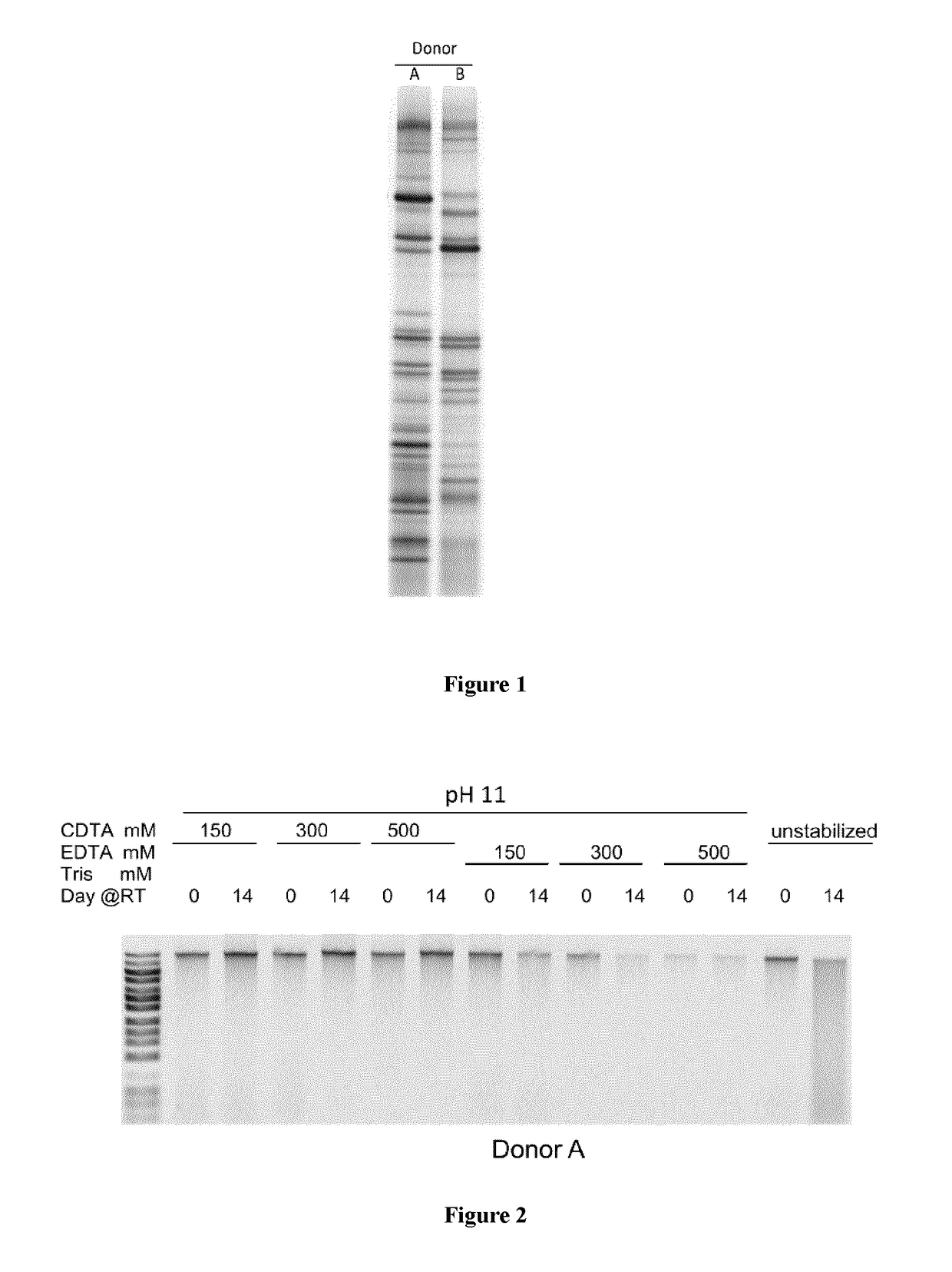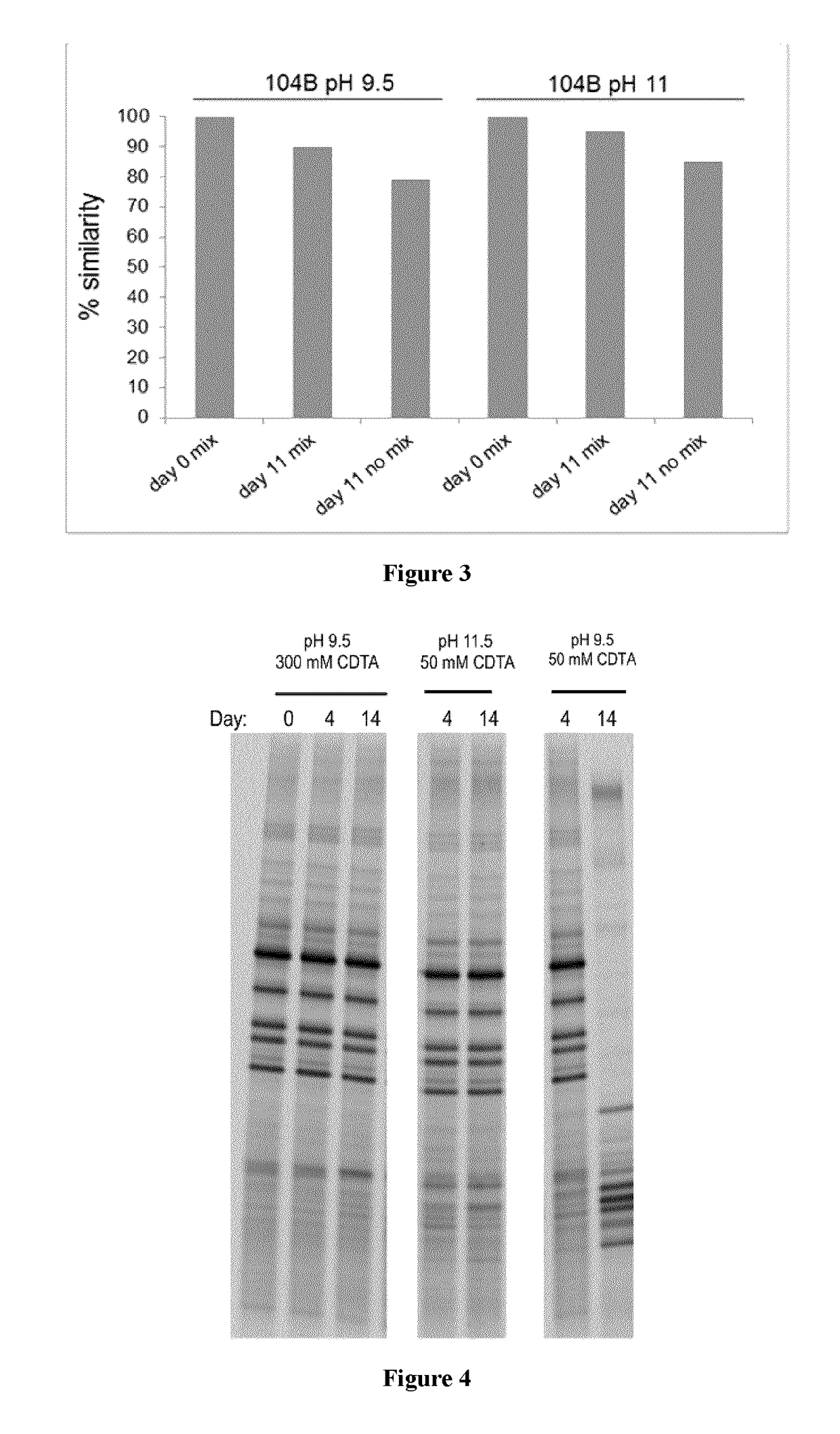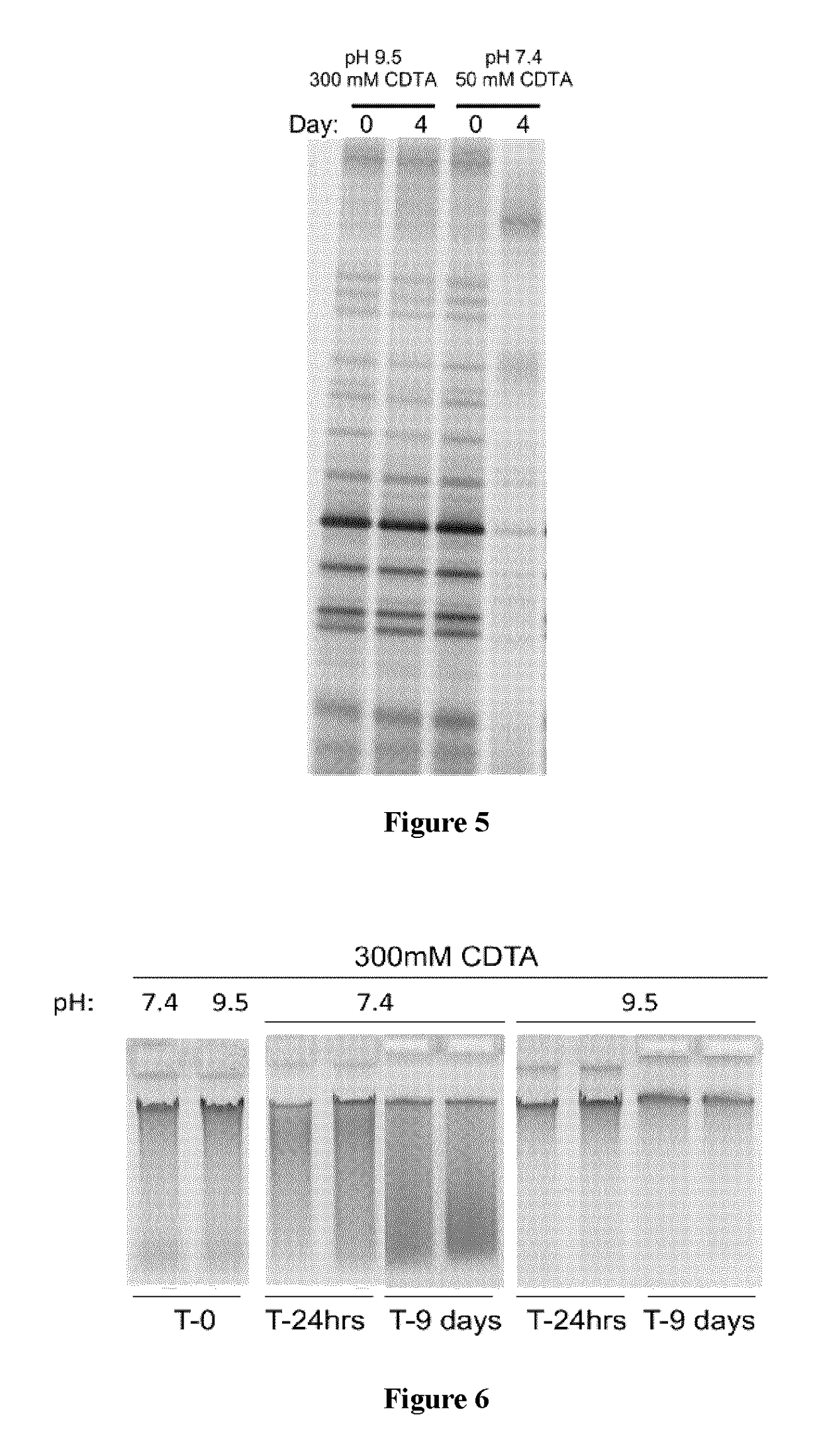Composition and Method for Stabilizing Nucleic Acids in Biological Samples
a nucleic acid and biological sample technology, applied in the field of stabilizing nucleic acids in biological samples, can solve the problems of limiting the effectiveness of analyzing specimens from a large number of individuals, affecting patients in hospitals and long-term healthcare facilities, and largely unsuccessful traditional microbiological culture techniques to help determine the identity and function of gut microorganisms
- Summary
- Abstract
- Description
- Claims
- Application Information
AI Technical Summary
Benefits of technology
Problems solved by technology
Method used
Image
Examples
example 1
Comparison of Different Chelating Agents in Compositions for Stabilizing DNA in Fecal Samples
[0213]Due to the vast amounts of nucleases in feces, mostly bacterial in origin, the inventors experimented with different chelating agents, and concentrations thereof, during development of the present composition.
[0214]The compositions described in the current Example contained 23.5% ethanol, 0.5% SDS, and 0.1% Antifoam A, along with EDTA or CDTA in varying amounts, buffered to pH 11 with 50 mM β-alanine. Percentages of ethanol and Antifoam A are (% v / v) in this and subsequent Examples, and percentages of other components (SDS, triclosan) are in (% w / v).
[0215]Referring to FIG. 2, feces was collected by a healthy donor and 400 mg samples were homogenized in various stabilization solutions or stored in the absence of stabilization buffer (unstabilized) for 14 days at room temperature (RT, 19-23° C.) prior to DNA extraction with a commercially-available kit (PowerSoil or PowerFecal DNA Isolat...
example 2
Role of pH and Chelating Agents in Fecal Sample Stability in the Present Composition
[0219]The complex relationships between fecal sample mixing, pH, and chelating agent concentration were investigated for their effects on microbiome profile stability as exemplified via PCR of bacterial 16S rRNA gene and DGGE analysis of the amplicons.
[0220]In the first of four experiments, a healthy donor collected feces and transferred 400 mg of feces into four tubes each containing a single 7.9 mm stainless steel ball and 2 mL of either composition “104B pH 9.5” (300 mM CDTA, 23.5% ethanol, 0.5% SDS, 0.1% Antifoam A, pH 9.5) or “104B pH 11” (300 mM CDTA, 50 mM β-alanine, 23.5% ethanol, 0.5% SDS, 0.1% Antifoam A, pH 11). Samples in the tubes were left undisturbed (no mix) or homogenized with hand shaking (mix) and then returned to the lab under ambient temperature conditions. Within 3-4 hours of sample collection, a 250 μL aliquot was removed from each tube for DNA extraction (T=0) and then samples...
example 3
Stabilization of Feces Following Mixing with Glass Beads and Stainless Steel Beads
[0231]Feces from a healthy donor was transferred in 400 mg aliquots into four tubes containing: 1) 2 mL stabilizing solution 104B pH 9.5 (as defined above) and four 4 mm plus ten 2 mm glass beads; 2) 2 mL stabilizing solution 104B pH 11(as defined above) and four 4 mm plus ten 2 mm glass beads; 3) 2 mL stabilizing solution 104B pH 9.5 and one 6 mm stainless steel ball; 4) 2 mL stabilizing solution 104B pH 11 and one 6 mm stainless steel ball. All four tubes were shaken by the donor by hand until mixed and brought back to the lab under ambient conditions. Within 3-4 hours of sample collection, DNA was extracted, quantified and 80 ng of each purified sample was run on an agarose gel (see Materials and Methods, and FIG. 7). Glass bead samples were vortexed and steel ball-containing samples were shaken prior to removal of an aliquot.
[0232]This example demonstrates the benefit of using a stainless steel mix...
PUM
| Property | Measurement | Unit |
|---|---|---|
| density | aaaaa | aaaaa |
| internal diameter | aaaaa | aaaaa |
| temperature | aaaaa | aaaaa |
Abstract
Description
Claims
Application Information
 Login to View More
Login to View More - R&D
- Intellectual Property
- Life Sciences
- Materials
- Tech Scout
- Unparalleled Data Quality
- Higher Quality Content
- 60% Fewer Hallucinations
Browse by: Latest US Patents, China's latest patents, Technical Efficacy Thesaurus, Application Domain, Technology Topic, Popular Technical Reports.
© 2025 PatSnap. All rights reserved.Legal|Privacy policy|Modern Slavery Act Transparency Statement|Sitemap|About US| Contact US: help@patsnap.com



